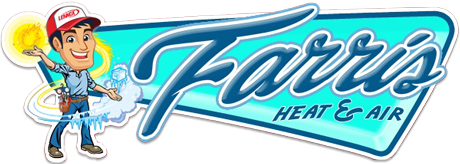When the weather is cooling off, you may be wondering about how you’ll make the most of your heating and cooling. After all, HVAC costs frequently contribute a big piece of your monthly electric bill. To try and find ways to reduce costs, some homeowners look closely at their thermostat. Maybe there’s a setting they should use to boost efficiency?
The majority of thermostats include both a ‘Fan’ or ‘Fan On’ setting. But if the fan is running during a normal cycle, what does the fan setting offer for an HVAC system? This guide will help. We’ll walk through what exactly the fan setting is and when you can use it to reduce costs over the summer or winter.
How Do I Access the Fan Setting on My Thermostat?
For the bulk of thermostats, the fan setting signifies that the air handler’s blower fan remains on. Some furnaces can run at a low level in this setting, but in general heating or cooling isn’t being made. The ‘Auto’ setting, conversely, will turn on the fan through a heating or cooling cycle and turn it off when the cycle is complete.
There are benefits and drawbacks to using the fan setting on your thermostat, and the ideal option {will|can|should]] depend on your personal comfort needs.
Advantages to utilizing the Fan/On setting:
- You can keep the temperature in every room more consistent by permitting the fan to keep circulating air.
- Indoor air quality can increase since steady airflow will keep forcing airborne pollutants into the air filter.
- A smaller amount of start-stop cycles for the system’s fan helps lengthen its life span. Because the air handler is usually a component of the furnace, this means you might minimize the risk of needing furnace repair.
Drawbacks to utilizing the Fan/On setting:
- A nonstop fan can raise your energy bills by a small margin.
- Continuous airflow may clog your air filter in a shorter amount of time, increasing the frequency you will want to replace it.
{Choosing Between|Should My Thermostat Be on|Which Setting for My Thermostat? Fan or Auto in Each Season
During the summer, warm air may linger in unfinished spaces like the attic or an attached garage. If you use the fan setting, your HVAC system may gradually move this warm air into the rest of your home, forcing the HVAC system to work harder to preserve the set temperature. In serious heat, this may result in needing AC repair more often as wear and tear gets worse.
The opposite can occur in the winter. Cooler spaces like a basement will hold onto cooler air, which may eventually drift into the rest of your home. Keeping the fan on may draw more cold air upward, increasing the amount of heating you need to remain warm.
If you’re still trying to determine if you should switch to the fan/on setting, remember that every home and family’s comfort needs are not the same. Leaving the HVAC system’s fan on may be best for you if:
Someone in your household has allergies. Allergies and other respiratory conditions can be tough on the family. Leaving the fan on is more likely to enhance indoor air quality, helping your family breathe easier.
Your home deals with hot and cold spots. All kinds of homes wrestle with stubborn hot and cold spots that quickly shift to a temperature different from the rest of the house. The fan setting might help lessen these changes by steadily refreshing each room’s ventilation.
